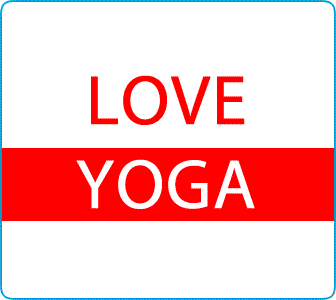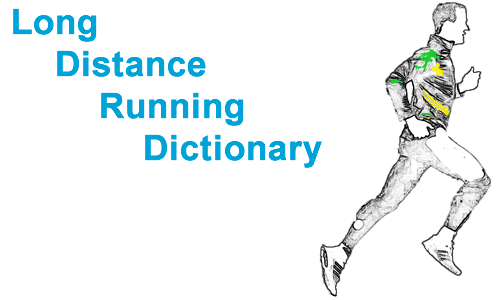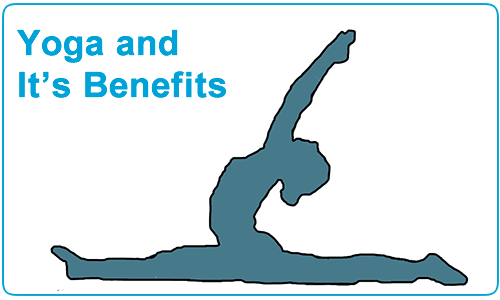Modern life is full of anxiety and problems and it creates a huge pressure on the human body. This makes a mess of life style issues like heftiness, hypertension, high cholesterol, diabetes and so forth.
What are the benefits of yoga? There are different sorts of relaxation, for example: physical, mental and emotional. Physical relaxation is accomplished by performing the asanas (Yoga postures). The stretching and moving of your physique during yoga exercises removes the physical strain. Deep yoga breathing helps in mental relaxation. Deep relaxation is conceivable when both the mind and the body are set free.

Purity of Mind with Meditation and Yoga
Meditation is a stand-in amongst the most essential part of yoga. It helps in interfacing the body, personality and soul. Day by day yoga meditation helps in mental purification and offers clarity of thoughts. It builds focus and concentration.
Meditation ought to be carried out in a clean, tranquil room at an altered time. Sit with folded legs and keep your spine straight. Sit on the floor, a seat or on the yoga meditation pad.
Don’t let any other person use this room since your vigor saturates this room and permitting others to use this place may contaminate the same. There is no compelling reason to keep eyes shut in the event that you can think with your eyes open.
Focus on your breath. Don’t reprimand yourself if it’s all the same to meanders. Simply carry your awareness onto your breath. If you can work with sounds better, use a consecrated word or serenade mantra.
You can additionally see the picture of your top choice divinity in your imagination to help you concentration.
Life Support of Yoga
Yoga improves an inspirational demeanor around its experts. It shows you the positive temperance’s like empathy, confidence, trust and love. It makes you conscious and responsive of your surroundings. It improves your quality and adaptability.
Your health and appearance enhances since all your physique organs work to their best limit. It shows you to consume strong, grungy and natural nourishment’s like soil grown foods, vegetables, fruits and so forth.
Yoga lays an extraordinary stretch on end of not so great items like liquor, smoking, non-veggie lover and processed nourishment, in this way diminishing harmful over-burden on your interior organs and as such they perform better.
For Pregnant Women
Yoga maneuvers large portions of the issues present during pregnancy like queasiness, cramping, and high pulse and so forth. It upholds great carriage, and accordingly disposes of back torment.
The deep yoga breathing and its contemplation systems cause mental relaxation and along these lines the aches during pregnancy and labor pains are minimized. The relaxation helps in quick recuperation of the body after the labor.
However keep away from stances on your back stomach area and complex postures and back twists throughout this time since they can hurt your child. Likewise don’t over extend your muscles or increment the force of your practice.
Yoga for All Age Group
A child’s physique is exceptionally adaptable. Beginning yoga at this young age can help in increasing the tallness of the child. Yoga meditation supports in improving the concentration.
Since yoga focuses on quality and natural eating diet, the kid studies the exceptional dietary patterns and figures out how to affection the distinctive sorts of leafy foods.
Visualization helps in improving the kid’s creative ability. Attempt to make their session lively. Don’t drive them to practice assuming that they would prefer not to.
As we age, our physique begins improving different health issues. Our muscles come to be feeble. We lose offset and coordination.
Yoga is an extraordinary counteract ant for these issues. It is sheltered and delicate on joints along these lines seniors can move around securely. It enhances breathing and session. Yoga classes might be an extraordinary social movement.
Hatha Yoga for Strong Bones & Muscles
Yoga keeps your physique strong, as it includes all the muscles in your physique to hold and balance yoga asanas (postures). The different yoga postures reinforce your feet, legs, hands, abs, lower back, legs, and shoulders.
Yoga’s stretching and breathing activities enhance your adaptability, helping joints, tendons, and muscles stay nimble.
Persons experiencing osteoarthritis or rheumatoid joint inflammation will see a discernible change in their firmness, torment, and other ligament side effects by exercising yoga postures.
Yoga enhances your perseverance, particularly the more physical manifestations of yoga, for example Ashtanga yoga, Vinyasa yoga, and Bikram yoga.
Hatha yoga can soothe interminable back and neck torment, since the stances and postures delicately extend and fortify your back and neck muscles.
Yoga is an astounding weight-bearing practice that can enhance your bone thickness. This is especially advantageous for ladies approaching menopause, since yoga can help ward off osteoporosis, or diminishing of the bone.
The gentler manifestations of yoga bring down your circulatory system on the grounds that the asanas (yoga postures, postures, and yoga positions) keep blood flowing uniformly all through your physique while you concentrate on your relaxing exercises.
People experiencing hypertension can benefit from yoga enormously, as hatha yoga can bring down your heart rate and circulatory strain.
Numerous professionals claim that yoga has likewise brought down their cholesterol level.
Hatha yoga is an incredible manifestation of cardio molding, which reinforces center muscles while it keeps blood and oxygen circulating all through your physique.
Mental Health
Yoga can benefit anybody’s mental health by helping him or her relaxing, and it is a viable manifestation of mental help.
Yoga diminishes tension and stress, bringing about better health, better state of mind, and better concentration for the duration of the day.
Yoga has been utilized to help treat a wide mixed bag of emotional and mental scatters, incorporating intense strain, despondency, and state of mind diversions.
Indeed, youngsters can get benefit from yoga. Those with a lack of ability to concentrate consistently and hyperactivity can figure out how to relax and get control by using yoga breathing exercises (Pranayam).
On the grounds that yoga is a manifestation of contemplation, it brings about a feeling of inward peace and reason, which has expansive health benefits.
Yoga has been used to help recuperate casualties of torture or other trauma.
Yoga can free you of strain migraines and headaches on the grounds that yoga courses blood and oxygen to your head, which can regularly, avert cerebral pains from beginning.
A normal yoga practice helps support cell reinforcements all through your physique, bringing about a stronger insusceptible body and enhanced capacity to recuperate rapidly from illness or harm.
Yoga can help you get more fit and keep up a strong weight all through your existence. Hatha yoga is a lively type of yoga that smolders calories, bringing about weight reduction.
Yoga Improves Immunity
Yoga can help cure sleep deprivation, as normal yoga practice improves better and deeper sleep.
Yoga can help battle exhaustion and keep up your vigor for the duration of the day.
Yoga is a viable medicine for a mixed bag of immune system ailments on the grounds that it can diminish the indications these illnesses cause, for example firmness, disquietude, and weariness.
Serenity is a conscious condition during which ones typical stresses and anxieties no more extended have control. This expedites a state of clarity in which enlightenment happens.
Serenity could be contrasted with the clearness of the water. It is not the stillness or development; it is the clearness that is serenity. The serenity of your mind can exist both in stillness and development period.
Serenity is the same thing as relaxation, in light of the fact that when you are silent and at ease.
To Accomplish Peace
We can accomplish serenity by getting aware of our breath. Anyhow the mind is not accustomed to it and will be occupied the minute you begin sitting in meditation viewing your breath.
The mind will attempt to disturb you with restless thinking process, entice you with cheerful thought’s, assuming that all else falls flat it will toss in a couple of extraordinary musings.
For instance if it’s all the same to you are an artist, might divert you with the guarantee of new tunes. Also assuming that you are a painter it might prescribe pictures to you.
Yet you don’t need to stress that you will lose tracks of these imaginative experiences, provided that you proceed with your meditation. Each of these diversions rolls out and after that passes away so they might as well basically be watched.
Meditation is the companion of thought and shows that it is not suspected that is wrong, yet our uncontrolled method for thinking.
Meditation helps us to bring about a significant improvement use of our reasoning, to wind up part of the clearness as opposed to the perplexity.
The serenity experienced in meditation will help your mind to end up less jumbled and help in thinking all the more rapidly and plainly:
- analyze contentions all the more altogether
- transparent issues all the more promptly
- take a gander at issues all the more dispassionately
Understanding Meditation is a manifestation of intercession that was contrived more than 2500 years prior by Gautam Buddha, the founder of Buddhism.
It is dependent upon the rule of care that not just serves to carry peace and clarity to our lives additionally helps lead the mind towards a more spiritual way.
Despite the fact that Meditation has been one of the focal teachings of Buddha, you don’t must be a honing Buddhist to experience its benefits.
Insight Meditation is progressively being used as a part of several Yoga classes as it is a standout amongst the most compelling and advantageous types of meditation.
Mindfulness Meditation
Several Yoga classes now offer lessons in Insight (Mindfulness) Meditation. When you have learnt the fundamental strategies you can additionally perform Insight Meditation from the solace of your home.
Notwithstanding, there are a few things that you might as well remember.
LOTUS POSE
It is an exceptional thought to characterize a period and place when you will complete intercession. Gave all a chance to your loved ones ponder it and ask not to be irritated.
The setting where the intercession is performed likewise assumes a critical part. Pick a tranquil, decently ventilated room where you won’t be disturbed. The best opportunity to think is in the unanticipated morning or nighttime.
Despite the fact that the Lotus posture is the most well known act for Insight Meditation, it can likewise be polished while sitting on a comfortable upright seat.
Sit with your back straight and chin tilted quite slightly down. Place your hands in your lap, palms confronting upwards. You may as well at first begin by meditating for just fifteen minutes.
As you bit by bit advance your certainty and stamina you can increase the time used on.
When you are seated in a comfortable pad, shut your eyes and step by step concentrate your mind on the distinctive parts of your physique. Feel the distinctive vibes that your physique gives you and step by step make your physique relax and at ease.
An alternate procedure is to keep awareness on your breath (incoming & outgoing). Feel each breath of inhales air as it way out from your nostrils to your lungs and afterward feel the same breath as it is exhaled from your lungs and sighed vacate through your nostrils.
Both of these are cooling strategies that permit the mind to come into a stable state. Despite the fact that your personality will at first tend to meander, with a little quietness and practice you can ace the intricacies of Insight Meditation.
Diet of Yoga Disciples
We might know full well what nourishment’s benefit us – or terrible, as far as that is concerned – notwithstanding, ever so regularly we settle on decisions that unfavorably influence our health and well-being.
Also when we over and over settle on less than great decisions, they in the end prompt a debilitated form, brought down invulnerability and, at long last, ailment.
Issue is the outcomes of our activities are not show instantly. There might well be a period slack, however in the long run; we procure the foods grown from the ground of what we have sown.
Purifying of the digestive tract is an approach to free your assemblage of toxins and flush out all aggregated polluting influences from your digestive tract.
A digestive purifying includes the purging of the complete digestive system although a stomach purifying includes the purifying of just the stomach.
Dinners ought to be fresh home made and kept basic. Numerous sorts of garbage sustenance, snacks, fricasseed nourishments, salty diets, canned food, processed food and sweets must be avoided totally.
Food with a high fat, protein and sugar content must be continuously decreased.
You should be encouraging the intake of light nourishments, for example fruits, vegetables and foods grown from the ground.
It is likewise for correctly this excuse for why that Yoga recommends a sattvic eating diet, rich in Prana i.e., sustenance full of the life-energy and a personality established in ethical and moral qualities like truth and non-savagery.
Pranayam
Pranayama is both the science and art of purifying the nadis.
Through managed breathing i.e. changing the cadence of inward breath and exhalation, it is conceivable to control the prana (Life Energy), imperative constrain in the figure.
Pranayama is the technique by which such consciousness control is attained through synchronized relaxing.
Cleaning the channels along which the life stream of “prana” flows helps avoid and even cure the physical and mental problems.
The whole time, it additionally increases ones by and large insusceptibility and imperviousness to sickness.
The best position to be expected for these practices is Sukhasan or the simple posture it likewise happens to be the most comfortable.
SUKHASAN POSE
The discriminating thing to shoulder as a main priority, notwithstanding, is carriage. The back, neck and head ought to be kept erect, i.e. in a straight line.
The figure ought not to be stiff, it ought to be in its characteristic loose or ease condition.
To plan for pranayama it is first better to inhale and exhale with ease in the aforementioned degree and side by side, be aware of your inhaling & exhaling breath. Do this a couple of rounds, for a couple of days.












